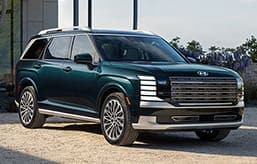- Rivian provides free NACS adapters to all owners, unlocking access to 15,000 Tesla Superchargers.
- Not all Superchargers are accessible to Rivian vehicles, though.
- Using a Tesla Supercharger was actually cheaper for our specific charging session (your experience may vary).
The Reality of Charging Your Rivian at a Tesla Supercharger
We took our long-term Rivian R1T to a Tesla Supercharger — here's how it went
Rivian is among the first automakers to add access to Tesla's Supercharger network, which, according to the EV maker, expands your charging options by 15,000 Superchargers nationwide. On top of this, Rivian is generously providing owners with a free NACS adapter. Yes, you read that right — free of charge, including shipping. This is a stark contrast to other manufacturers like General Motors, which is charging a hefty $225 for its version, or even Tesla, which sells a NACS-to-CCS adapter for $125 (plus another $100-$175 if your Tesla requires a retrofit). However, there are a few things Rivian owners need to be aware of before diverting to the nearest Tesla Supercharger.
Not all Superchargers are created equal
This is the most important caveat: Not every Tesla Supercharger will work with your Rivian. You can locate Rivian-compatible Superchargers through the vehicle's onboard navigation system, through the Rivian mobile app or through the Tesla mobile app. We're told that only the newer V3- and V4-generation Supercharger stations are compatible. However, it seems that not all potentially compatible stations are open to Rivian drivers. Some of the newer locations by Edmunds HQ, which clearly have V3 machines installed, are not accessible. This makes sense, as Tesla probably wants to retain some form of exclusivity for its owners.
Payment pains
Tesla's Superchargers use a plug-and-charge billing system exclusively, which is convenient — until it's not. Plug-and-charge means there's no payment interface at the machine, but your vehicle is recognized when you plug in and your account is automatically billed. Other charging networks sometimes offer plug-and-charge as an alternative form of payment but often have a credit card point of sale as well. Rivian owners should ensure they have an in-app payment method activated and that it's up-to-date. A little hiccup we encountered involved using a different digital key that was tied to an expired payment method.
We attempted updating the payment method on the spot but it didn't resolve the issue, and we couldn't charge. Luckily, we weren't short of charging options in the area, but you could end up in a pickle if you encounter a payment issue at the last station within driving range.
Map mismatches
Our Supercharger trial test also included a brief moment where our desired station didn't originally show up in the Rivian app. While this could have been a one-off glitch, it's something to keep in mind if you're planning a route that is charger-sensitive .(Be mindful of the map filters you have on, as well.) Rivian assured us that the maps should be in sync, but it's worth a second check.
We'd recommend using your car's onboard navigation if heading to a charger anyway since this will automatically trigger the Rivian's battery preconditioning function and ensure the quickest possible charging speeds right when you plug in.
Charging up
The adapter itself feels like a well-made piece of kit. There's a mechanism that firmly locks the adapter to the Tesla plug, and then you can firmly push the whole assembly into the Rivian charge port. Although the Rivian's charge port (front left corner) differs from the location of Tesla's (left rear), when cozied up to the Supercharger, the V3 cord in this case was long and pliable enough to make the connection without much struggle.
With a current payment method on file this time, the charger commenced in less than a minute and charging power soon peaked at an indicated 206 kW. It was a fairly warm day (86 degrees) and our charger plug and cord were in direct sunlight, so it wasn't too soon that charger started to derate power delivery.
How do we know this? Our Rivian told us, which is pretty darn cool.
According to Rivian, this message, or a similar message, will appear if there is something causing the restriction of power flow. If you were plugged into, say, a 100-kW charger, and the charging is operating normally, you would not see this message even though the Rivian is capable of charging at more than double that power.
Is using a Tesla Supercharger more or less expensive?
Pricing will likely vary from station to station and depend on time of day and whether you have a network subscription. But in our case, charging at the Supercharger was slightly cheaper than if we were to fill up at a nearby Electrify America station.
Our session cost us about 52 cents per kWh of charging, where the nearby EA station was charging 62 cents. By using the Supercharger we saved ourselves $8.76 on the total charge, which is not insignificant. Tesla also offers a monthly membership for $12.99 (plus tax), which lowers your cost per kWh to 41 cents. You'd have to do roughly 131 kWh worth of fast charging to break even, but this could make sense for Rivian owners who are frequent fast chargers.
The bottom line
Access to the Tesla Supercharger network for your Rivian is, overall, a great thing. Supercharger stations tend to have more machines, which can either mean shorter queues or not having to wait to plug in at all. And as long as the plug-and-charge system is working as it should, charging on the go couldn't be more seamless. However, since Superchargers are not as certain as death or taxes, it'd be wise to have a backup plan when heading to more adventurous destinations.








 by
by  edited by
edited by